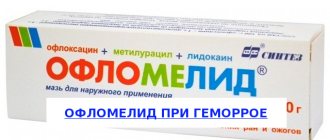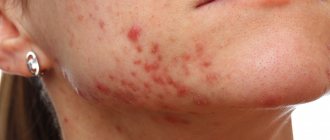Back to list Previous article Next article
07.12.2021
Tags:
shigella, shigella
Vote
Shigella is an anaerobic, gram-negative bacteria that causes dysentery. They belong to the Enterobacteriaceae family. There are 4 species, divided into serogroups:
- Shigella Flexnera;
- dysenteric shigella;
- Shigella Zone;
- Shigella Boyd.
Detailed description of the study
Shigellosis, or dysentery, is an acute intestinal infection, which is accompanied by intoxication of the body and damage to the gastrointestinal tract, mainly the distal parts of the large intestine. The causative agent of the disease is bacteria of the genus Shigella. Based on their properties, they are divided into 4 groups (Flexner/S. flexneri, Bodie/S. boydii, Dysentery/S. dysenteriae, Sonne/S. sonnei), each of which has several types.
The source of infection is humans. The mechanism of transmission of the pathogen is fecal-oral. Bacteria enter the body with contaminated food or water in the stomach, and then enter the small and large intestines, where they penetrate cells, release a toxin and cause inflammation, including the formation of ulcers on the mucous membrane. The toxin acts on nerve endings, causing spasms and pain, as well as on blood vessels, leading to circulatory disorders. The toxin has not only a local effect, but also a general one - a person develops intoxication.
The incubation period is 2-3 days. The disease begins with increased body temperature, weakness, lethargy, nausea, and pain in the lower abdomen. The stool becomes frequent, liquid, mixed with blood. Then the person feels sharp, nagging pain in the lower abdomen and rectal area, a urge to have a bowel movement with a slight discharge in the form of mucus and/or blood, and sometimes a complete absence of discharge (the so-called false urge to defecate, tenesmus). A gastroenteric variant is also distinguished, which is characterized by more significant damage to the upper gastrointestinal tract, accompanied by profuse vomiting and frequent bowel movements in the absence of severe damage to the colon.
Dysentery can become chronic (more than three months). It can be continuous when symptoms progress with deep damage to the gastrointestinal tract. In this case, no significant intoxication is observed, but the person suffers from constant abdominal pain and diarrhea. With a recurrent course of the disease, periods of exacerbation alternate with phases of remission. The chronic course of shigellosis is more typical for people with reduced immunity.
Also one of the forms of the disease is bacterial carriage. It is characterized by the absence of clinical signs during and three months before the examination, while Shigella is detected in the stool.
Shigellosis can have adverse effects, especially in children. After infection with Shigella Flexner, in 2-4% of cases, reactive inflammation of the joints (arthritis), eye damage (conjunctivitis) and inflammation of the urethra (urethritis) are possible. Timely detection and treatment of shigellosis helps to avoid its complications.
To diagnose dysentery, bacteriological methods (isolation of the pathogen), PCR (DNA determination) and serological (determination of antibodies in the blood) are used.
When bacteria enter the body, protective antibodies are formed against them - immunoglobulins. IgM is produced at the onset of the disease, and IgG - at later stages. Determination of antibodies in the blood to Shigella (serology) is an auxiliary diagnostic method, especially indicated in the case of a negative bacteriological test result, if shigellosis remains suspected. The analysis allows us to detect total antibodies of both classes to Shigella Flexnera serotypes 1-5. This study must be carried out dynamically, with the first analysis carried out, for example, upon admission to the hospital (best from the 5th day of the disease), and then 7–10 days after the first study. The diagnosis is confirmed by an increase in the titer (level) of antibodies by at least 4 times.
general characteristics
The shape of bacteria can be compared to rods, which have rounded ends and no flagella. Standard parameters are 0.5-0.7 by 2-3 microns. There is no ability to create capsules with spores.
The peculiarity of Shigella is its minimal resistance to chemical, physical, and biological action from the outside. Having settled on objects or products, dishes, they live no more than 14 days. Instant death occurs at +100 degrees.
If we talk about direct sunlight, it neutralizes bacteria within 30 minutes. With its deficiency and excess moisture, Shigella caught in the soil can live up to 3 months. Once in the gastric juice, they are destroyed within a few minutes. But in frozen or dried feces, organisms exist for up to several months.
The bacteria were named after a Japanese microbiologist. It was Kiyoshi Shiga, who in 1897 identified the organisms that represent Shigella dysenteriae today.
What else is prescribed with this study?
Clinical blood test with leukocyte count and ESR (with microscopy of a blood smear to detect pathological changes) (venous blood)
3.9.1. Ven. blood 1 day
430 ₽ Add to cart
Coprogram
21.2. Feces 1 day
370 ₽ Add to cart
Culture for intestinal pathogens (Shigella spp., Salmonella spp.)
123.0. Feces, smear 4 days
690 ₽ Add to cart
Culture for yersinia (Yersinia spp.)
132.0. Feces 12 days
690 ₽ Add to cart
Shigella, Escherichia, Salmonella, Campylobacter, DNA (Shigella spp., E. coli (EIEC), Salmonella spp., Campylobacter spp., PCR) feces, quality.
19.53. Feces 2 days
860 ₽ Add to cart
Dysentery
All Shigella provoke the development of bacterial dysentery. The pathology affects the distal part of the large intestine and is accompanied by intoxication. The bacterium is transmitted through household contact and the fecal-oral method, through food and water. The main carriers are cockroaches and flies.
The infection is accompanied by a dull pain in the abdominal area, which turns into cramping attacks in the lower zone. Defecation is accompanied by nagging pain, shooting into the sacrum. Its frequency at first is 10-25 times per day. The masses are filled with blood and mucus, and later pus appears.
Shigellosis incubation usually lasts up to 7 days and is accompanied by the following symptoms:
- headache;
- severe fever with convulsions;
- severe malaise;
- heat;
- frequent vomiting.
Recovery is noted after 3 weeks. In a certain group of patients the disease becomes chronic.
Shigella (shigella, genus of bacteria)
Shigella
(lat.
Shigella
) is a genus of gram-negative, facultative anaerobic bacteria that are causative agents of dysentery.
Shigella in the taxonomy of bacteria
The genus Shigella (lat. Shigella
) is included in the family of enterobacteria (lat.
Enterobacteriaceae
), the order of enterobacteria (lat.
Enterobacteriales
), the class of gamma-proteobacteria (lat.
γ proteobacteria
), the type of proteobacteria (lat.
Proteobacteria
), the kingdom of bacteria. The Shigella genus includes 4 species corresponding to four serogroups:
- Shigella
dysenteriae , serogroup A, includes 12 serotypes - Flexner's shigella ( Shigella flexneri
), serogroup B - 6 serotypes - Shigella boydii ,
serogroup C - 23 serotypes - Shigella sonnei ,
serogroup D - serotype 1
Shigella. General information
Shigella have the appearance of rods without flagella, with rounded ends measuring 2-3 by 0.5-0.7 microns.
They do not form spores or capsules. Shigella is poorly resistant to physical, chemical and biological environmental factors. Shigella lives in water, soil, food, on objects, dishes, vegetables, and fruits for 5–14 days. At a temperature of 60 °C, Shigella die in 10–20 minutes, at 100 °C - instantly. Direct sunlight kills Shigella within 30 minutes. In the absence of sunlight, high humidity and moderate temperatures, Shigella remains viable in the soil for up to 3 months. Shigella can survive in gastric juice for only a few minutes. In stool samples, Shigella die from the acidic reaction of the environment and antagonist bacteria after 6–10 hours. In dried or frozen stool, Shigella is viable for several months. The most resistant to external influences is the Shigella species Shigella sonnei,
the least resistant is
Shigella dysenteriae
.
In patients with colorectal cancer, an increased content of Shigella spp is found in the tissues of adenomas.
(Shen XJ, Rawls JF, Randall T. et al. Molecular characterization of mucosal adherent bacteria and associations with colorectal adenomas. Gut Microbes 2010; 1: 138–147.)
Shigella is named after the Japanese physician and microbiologist Kiyoshi Shiga (or Shiga; 1871–1951), who in 1897 isolated the pure bacteria that today belong to the species Shigella dysenteriae.
Shigella - the causative agent of dysentery
All types of Shigella can be the causative agents of an infectious disease - bacterial dysentery
(also called
shigellosis
), which occurs with symptoms of intoxication and predominant damage to the distal colon. The most favorable conditions for the development of Shigella are in the transverse colon and descending colon.
Infection occurs through the fecal-oral or household contact route, through water and food products. Shigellosis can be transmitted by flies and cockroaches.
Shigellosis is characterized by constant dull pain throughout the abdomen, which later becomes acute cramping, localized in the lower abdomen, usually on the left or above the pubis. During the act of defecation, nagging pain in the rectal area, radiating to the sacrum. Initially, frequent bowel movements - up to 10-25 per day, mainly from mucus with inclusions of blood, and in a later period, admixtures of pus. Frequent false urge to defecate - tenesmus.
Bacterial dysentery (shigellosis) has an incubation period from several hours to 7 days, most often occurs acutely and is manifested by malaise, chills, headache, fever, convulsions, single or repeated vomiting. The patient's temperature rises. At the same time or slightly later, abdominal pain appears. Full recovery occurs in 2–3 weeks. In some patients, dysentery becomes chronic.
In the United States, Shigella is the third (after Salmonella and Campylobacter) cause of foodborne illnesses and hospitalizations. In 2010, there were a total of 1,780 cases of shigellosis reported in the United States. 333 sick people were hospitalized. However, fatal shigellosis, unlike a number of other food infections, has not been recorded.
See also: Advice from the American College of Gastroenterology for food poisoning (translation into Russian of a release published in the USA on June 3, 2011 in connection with infection in Europe)
.
Treatment of dysentery caused by shigella
For the treatment of shigella dysentery, WHO recommends (“Treatment of diarrhea.” 2006):
- as the antibiotic of choice - ciprofloxacin 500 mg twice a day for adults, 15 mg per kg of body weight twice a day for children, taken for three days
- as alternative antibacterial agents:
- pivmecillin 400 mg 4 times a day for adults, 20 mg per kg of body weight twice a day for children, taken for five days or
- ceftriaxone - in children 50-100 mg per kg body weight intramuscularly for 2-5 days
recently isolated in a particular area.
Antibiotics active against Shigella
Antibacterial agents (those described in this reference book) active against Shigella: rifaximin, furazolidone, nifuroxazide, ciprofloxacin, oflaxacin, norfloxacin, amoxicillin, doxycycline (not all strains). Josamycin is active against some species of Shigella. Nifuratel is active against Shigella flexneri
and
Shigella sonnei
. Shigella is resistant to roxithromycin.
Shigella and shigellosis in ICD-10
Shigella and shigellosis are mentioned in the International Classification of Diseases ICD-10 in “Class I. Some infectious and parasitic diseases” where in the block “A00-A09 Intestinal infections” for shigillosis of various types a three-character heading “A03 Shigellosis” is allocated, containing the following four-character headings:
- A03.0 Shigellosis caused by Shigella dysenteriae
. Group A shigillosis [Shiga-Kruse dysentery]. - A03.1 Shigellosis caused by Shigella flexneri
. Shigillosis group B. - A03.2 Shigellosis caused by Shigella boydii
. Shigillosis group C. - A03.3 Shigellosis caused by Shigella sonnei
. Shigillosis group D. - A03.8 Other shigellosis.
- A03.9 Shigellosis, unspecified. Bacterial dysentery, unspecified.
On the website GastroScan.ru in the “Literature” section there is a subsection “Constipation and Diarrhea”, containing professional medical articles, including those related to bacterial diarrhea and their treatment. Back to section
Classification according to ICD-10
For the described shigillosis, represented by different types, a three-character heading has been conditionally created. It contains the following subspecies:
- A03.0 - pathology caused by Shigella dysenteriae, belongs to group “A” and is called Shiga-Kruse dysentery;
- A03.1 – disease with a pathogen in the form of Shigella flexneri, group “B”;
- A03.2 – a disease caused by the bacterium Shigella boydii, belongs to group “C”;
- A03.3 – disease from Shigella sonnei, group “D”;
- A03.9 – unspecified form of shigillosis.
Back to list Previous article Next article
Treatment of dysentery
Effective therapy for the disease involves the use of the following drugs:
- ciprofloxacin of the antibiotic group, taken for 3 days in a dosage approved by the attending physician;
- Alternative antibiotics include pivmecillin - up to 5 days of use in individual doses, ceftriaxone - up to 5 days.
When determining a medication for the treatment of dysentery, the results of drug sensitivity tests regarding the Shigella strain are taken into account.
There are a number of antibiotic drugs that in practice demonstrate high activity against Shigella. These are furazolidone, rifaximin, oflaxacin, etc. If we talk about josamycin, it is effective against certain types of Shigella. It is important to remember that such bacteria demonstrate resistance to roxithromycin.



